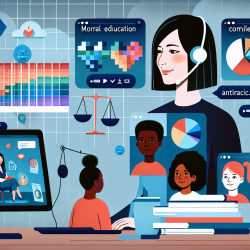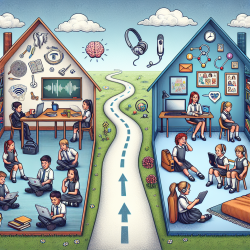The article "Change the People or Change the Policy? On the Moral Education of Antiracists" by Alex Madva, Daniel Kelly, and Michael Brownstein presents compelling arguments for integrating both individual and structural changes in antiracist efforts. As practitioners in the field of speech language pathology, especially those providing online therapy services like TinyEYE, we can draw valuable insights from this research to enhance our practice and foster better outcomes for children.
The core argument of the research advocates for a "both/and" approach to antiracist moral education. This approach emphasizes the importance of understanding how social structures influence racial ideas and how these ideas, in turn, shape and sustain social structures. For practitioners, this means that our efforts should not only focus on changing individual attitudes but also on addressing the systemic issues that perpetuate racial inequalities.
Key Takeaways for Practitioners:
- Holistic Approach: Incorporate lessons that teach children about the impact of social structures on racial inequalities, alongside individual-level interventions. This can help children understand the broader context of racial issues.
- Structure-Facing Virtue: Encourage children to recognize and challenge unjust social structures. This can be done through age-appropriate discussions and activities that highlight the role of institutions and policies in shaping societal norms.
- Interactive Learning: Utilize interactive tools and games that promote empathy and understanding of different social contexts. For example, role-playing activities where children can experience perspectives of marginalized groups can be highly effective.
- Parental Involvement: Engage parents in the process by providing them with resources and strategies to discuss structural inequalities with their children. This ensures that antiracist education extends beyond therapy sessions and into the home environment.
Encouraging Further Research:
While the research provides a strong foundation, it is crucial for practitioners to stay informed about ongoing developments in the field of antiracist education. Engaging with current literature, attending workshops, and participating in professional development opportunities can enhance our understanding and implementation of effective strategies.
By integrating the outcomes of this research into our practice, we can contribute to the moral education of children, helping them develop a nuanced understanding of racial issues and empowering them to be agents of change.
To read the original research paper, please follow this link: Change the People or Change the Policy? On the Moral Education of Antiracists










